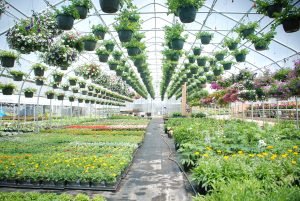As a homeowner, having a small front yard can sometimes feel limiting when it comes to landscaping. However, with some creativity and careful planning, your limited outdoor space can still be transformed into an inviting and beautiful area. In this article, we will explore some practical ideas and tips for creating stunning front yard landscaping in small spaces. From selecting the right plants to using visual tricks to make the space appear larger, we’ve got you covered! So let’s get started on making the most of your limited area!
Analyzing Your Space
When it comes to front yard landscaping for small spaces, analyzing your space is crucial. Before you start planting and designing, take a closer look at the area and determine what you have to work with. Assess the amount of sunlight that hits the spot throughout the day and consider any shade from surrounding structures or trees. This will help you choose plants that will thrive in your specific environment.
In addition to sunlight, it’s important to analyze the soil quality and drainage in your front yard. Different plants have different soil requirements, so knowing what kind of soil you’re dealing with can help you choose appropriate plant species accordingly. Understanding how water flows through your front yard is also essential as poor drainage can harm plants or lead to flooding during heavy rainfalls.
Finally, think about how much useable space you actually have in your front yard. Consider any walkways or hardscaping already in place and plan around them accordingly. With careful analysis of your small space, thoughtful planning and smart choices when it comes to plant selection and design elements can make a big impact on creating an attractive yet functional landscape.
Measuring And Mapping Your Yard
When it comes to front yard landscaping for small spaces, accurately measuring and mapping your yard is crucial. First, start by measuring the length and width of your yard using a tape measure. This will help you determine the total area that you have to work with. Next, create a map of your yard on graph paper, with each square representing a certain measurement in feet or inches. This will give you an accurate representation of the layout of your space.
Once you have created your yard map, consider adding important features such as trees, garden beds, walkways and driveways. You can also add any structures like patios or decks that are already in place. After this step is complete, you may find areas where there is unused space that could be used for additional landscaping elements.
Designing Your Landscape
Designing your landscape can be a daunting task, especially if you have limited space to work with. opulandscape.com provides you with more information about designing your landscape. However, with careful planning and consideration, even small front yards can be transformed into beautiful outdoor spaces. Start by assessing the area and taking note of any existing features that may need to be incorporated or worked around.
When designing for small spaces, it’s important to prioritize functionality and utilize every inch of available space. Consider adding multi-functional elements such as a patio that doubles as a seating area or incorporating raised garden beds for both aesthetic appeal and practicality. Vertical gardening is also an excellent option for small spaces as it maximizes vertical real estate while providing greenery.
Choosing The Right Plants
When it comes to front yard landscaping for small spaces, choosing the right plants can make all the difference. It’s crucial to opt for plants that won’t outgrow their space and become overwhelming or require excessive maintenance. Consider the size of your front yard and choose plants accordingly. For example, dwarf varieties of trees and shrubs are great options as they won’t overpower your small space.
Another important factor to consider when choosing plants is their water requirements. Opting for drought-tolerant plants such as succulents, cacti, or lavender can save you time and money in watering while still adding beauty to your front yard landscaping. Additionally, incorporating native plants into your design will not only thrive in your local environment but also support local wildlife.
Adding Decorative Elements
Adding decorative elements can make a big impact on the overall look and feel of your front yard landscaping. When dealing with limited space, it’s important to choose decor that is proportionate to the area. Consider adding a small water feature such as a fountain or bird bath, which not only adds visual interest but also attracts birds for an added natural element. Another option is to incorporate colorful planters filled with flowers or succulents for a pop of color and texture. If you are looking for experts to do it for you contact us today for a free quote.
In addition to plants and water features, consider incorporating other outdoor decor such as garden statues or sculptures. These can add personality and charm to your front yard while still taking up minimal space. For example, a small gnome statue tucked into a corner can bring some whimsy and fun to your landscape design.
Maintaining Your Landscape
Maintaining your landscape is a crucial aspect of creating and preserving a beautiful outdoor space. However, when working with a limited area in your front yard, it’s essential to approach landscaping from a different angle. Begin by choosing plants that are proportionate to the size of your outdoor space and create layers of height using taller plants towards the back and shorter ones at the front. This technique will add depth to your garden while making it appear bigger than it is.
Another way to maintain your front yard landscape is by pruning regularly. It’s easy for small spaces to look overcrowded if trees or shrubs aren’t maintained correctly. Trim away any dead branches or leaves, shape bushes into neat forms, and prune trees based on their growth pattern to keep them healthy while maintaining an aesthetically pleasing look. Maintaining plant health through proper watering techniques and soil preparation can also help ensure that they thrive all year round in their limited space. By following these tips, you’ll be able to enjoy a beautiful, well-maintained front yard landscape regardless of its size!
Watering And Fertilizing Tips
Watering and fertilizing are two essential factors when it comes to maintaining a healthy and beautiful front yard landscape. For small spaces, it is crucial to be strategic in both practices to ensure that plants get the necessary nutrients without overdoing it. When watering, aim for deep watering sessions rather than frequent shallow watering. This helps promote deeper root growth, making plants more resilient during dry spells. It’s also important to water in the early morning or late evening to reduce water loss due to evaporation.
When it comes to fertilizing, organic options like compost and manure are ideal choices for small spaces as they provide natural nutrients that don’t harm the environment or surrounding wildlife. It’s best to fertilize at the beginning of each growing season and then sparingly throughout the year if necessary. Over-fertilization can lead to excessive plant growth, which may not be desirable in small spaces where there is limited room for expansion. Pest and Disease
Conclusion
In conclusion, designing a front yard landscape for small spaces can be challenging, but it’s not impossible. With some creative ideas and smart planning, you can transform your limited area into an inviting and beautiful outdoor space that enhances your home’s curb appeal. As we’ve discussed throughout this article, there are several ways to make the most of your space while incorporating functional elements like seating areas or walkways.
One thing to keep in mind is that less is often more when it comes to landscaping small front yards. Too many plants or decorative features can clutter the space and make it look even smaller. Instead, focus on using a few key design elements strategically placed to create visual interest without overwhelming the area.
Lastly, don’t forget about maintenance when planning your front yard landscaping project. Choose low-maintenance plants and materials that require minimal upkeep to ensure that your new outdoor space remains beautiful year-round with minimal effort on your part. With these tips in mind, you’ll be well on your way to creating a stunning front yard landscape in any small space!






Be First to Comment